Monitoring of the Dehydration Process of Apple Snacks with Visual Feature Extraction and Image Processing Techniques
Abstract
1. Introduction
2. Materials and Methods
2.1. Apple Snacks Preparation
2.2. Computer Vision Measurements
2.3. Feature Extraction
2.4. Selection of Features
3. Results
Apple Snacks Characterization
4. Conclusions
Author Contributions
Funding
Informed Consent Statement
Data Availability Statement
Acknowledgments
Conflicts of Interest
References
- Samsatli, S.; Martinez-Hernandez, E.; Ng, K.S. Towards a sustainable bio- economy: Working in harmony with the environment–food–energy–water nexus. Food Bioprod. Process. 2020, 119, 371–372. [Google Scholar] [CrossRef]
- Linko, S.; Linko, P. Developments in Monitoring and Control of Food Processes. Food Bioprod. Process. 1998, 76, 127–137. [Google Scholar] [CrossRef]
- Ochieng, J.; Kirimi, L.; Mathenge, M. Effects of climate variability and change on agricultural production: The case of small-scale farmers in Kenya. NJAS-Wagening. J. Life Sci. 2016, 77, 71–78. [Google Scholar] [CrossRef]
- Rosas-Romero, R.; Tagare, H.D. Segmentation of endocardium in ultrasound images based on sparse representation over learned redundant dictionaries. Eng. Appl. Artif. Intell. 2014, 29, 201–210. [Google Scholar] [CrossRef]
- Rosas-Romero, R. Remote detection of forest fires from video signals with classifiers based on K-SVD learned dictionaries. Eng. Appl. Artif. Intell. 2014, 33, 1–11. [Google Scholar] [CrossRef]
- Unnikrishnan, S.; Donovan, J.; Macpherson, R.; Tormey, D. Machine Learning for Automated Quality Evaluation in Pharmaceutical Manufacturing of Emulsions. J. Pharm. Innov. 2019, 15, 392–403. [Google Scholar] [CrossRef]
- Raponi, F.; Moscetti, R.; Chakravartula, S.S.N.; Fidaleo, M.; Massantini, R. Monitoring the hot-air drying process of organically grown apples (cv. Gala) using computer vision. Biosyst. Eng. 2021, 223, 1–13. [Google Scholar] [CrossRef]
- Sharma, S.; Dhalsamant, K.; Tripathy, P.P. Application of computer vision technique for physical quality monitoring of turmeric slices during direct solar drying. J. Food Meas. Charact. 2018, 13, 545–558. [Google Scholar] [CrossRef]
- Sánchez, A.J.; Albarracin, W.; Grau, R.; Ricolfe, C.; Barat, J.M. Control of ham salting by using image segmentation. Food Control. 2008, 19, 135–142. [Google Scholar] [CrossRef]
- Jia, W.; Liang, G.; Tian, H.; Sun, J.; Wan, C. Electronic Nose-Based Technique for Rapid Detection and Recognition of Moldy Apples. Sensors 2019, 19, 1526. [Google Scholar] [CrossRef] [PubMed]
- Ezhilan, M.; Nesakumar, N.; Babu, K.J.; Srinandan, C.; Rayappan, J.B.B. An Electronic Nose for Royal Delicious Apple Quality Assessment—A Tri-layer Approach. Food Res. Int. 2018, 109, 44–51. [Google Scholar] [CrossRef] [PubMed]
- Baietto, M.; Wilson, A.D. Electronic-Nose Applications for Fruit Identification, Ripeness and Quality Grading. Sensors 2015, 15, 899–931. [Google Scholar] [CrossRef] [PubMed]
- Tang, Y.; Xu, K.; Zhao, B.; Zhang, M.; Gong, C.; Wan, H.; Wang, Y.; Yang, Z. A novel electronic nose for the detection and classification of pesticide residue on apples. RSC Adv. 2021, 11, 20874–20883. [Google Scholar] [CrossRef] [PubMed]
- Li, C.U.I.; Niu, L.Y.; Li, D.J.; Liu, C.Q.; Liu, Y.P.; Liu, C.J.; Song, J.F. Effects of different drying methods on quality, bacterial viability and storage stability of probiotic enriched apple snacks. J. Integr. Agric. 2018, 17, 247–255. [Google Scholar] [CrossRef]
- Cichowska-Bogusz, J.; Figiel, A.; Carbonell-Barrachina, A.A.; Pasławska, M.; Witrowa-Rajchert, D. Physicochemical Properties of Dried Apple Slices: Impact of Osmo-Dehydration, Sonication, and Drying Methods. Molecules 2020, 25, 1078. [Google Scholar] [CrossRef] [PubMed]
- Haralick, R.M.; Shanmugam, K.; Dinstein, I.H. Textural Features for Image Classification. IEEE Trans. Syst. Man Cybern. 1973, 3, 610–621. [Google Scholar] [CrossRef]
- Löfstedt, T.; Brynolfsson, P.; Asklund, T.; Nyholm, T.; Garpebring, A. Gray-level invariant Haralick texture features. PLoS ONE 2019, 14, e0212110. [Google Scholar] [CrossRef] [PubMed]
- Brynolfsson, P.; Nilsson, D.; Torheim, T.; Asklund, T.; Karlsson, C.T.; Trygg, J.; Nyholm, T.; Garpebring, A. Haralick texture features from apparent diffusion coefficient (ADC) MRI images depend on imaging and pre-processing parameters. Sci. Rep. 2017, 7, 4041. [Google Scholar] [CrossRef] [PubMed]
- Yang, M.; Kpalma, K.; Ronsin, J. A Survey of Shape Feature Extraction Techniques. Pattern Recognit. 2008, 15, 43–90. Available online: https://hal.archives-ouvertes.fr/hal-00446037 (accessed on 12 January 2020).
- Safar, M.H. Shape analysis and retrieval of multimedia objects. In Intelligent Virtual World: Technologies and Applications in Distributed Virtual Environment; World Scientific Publishing Company: Singapore, 2004; pp. 21–51. [Google Scholar] [CrossRef]
- Chen, Y.; Li, F.; Huang, T. Curvature features based shape analysis. In Proceedings of the International Conference on Intelligent Computing, Shanghai, China, 15–18 September 2008; pp. 414–421. [Google Scholar] [CrossRef]
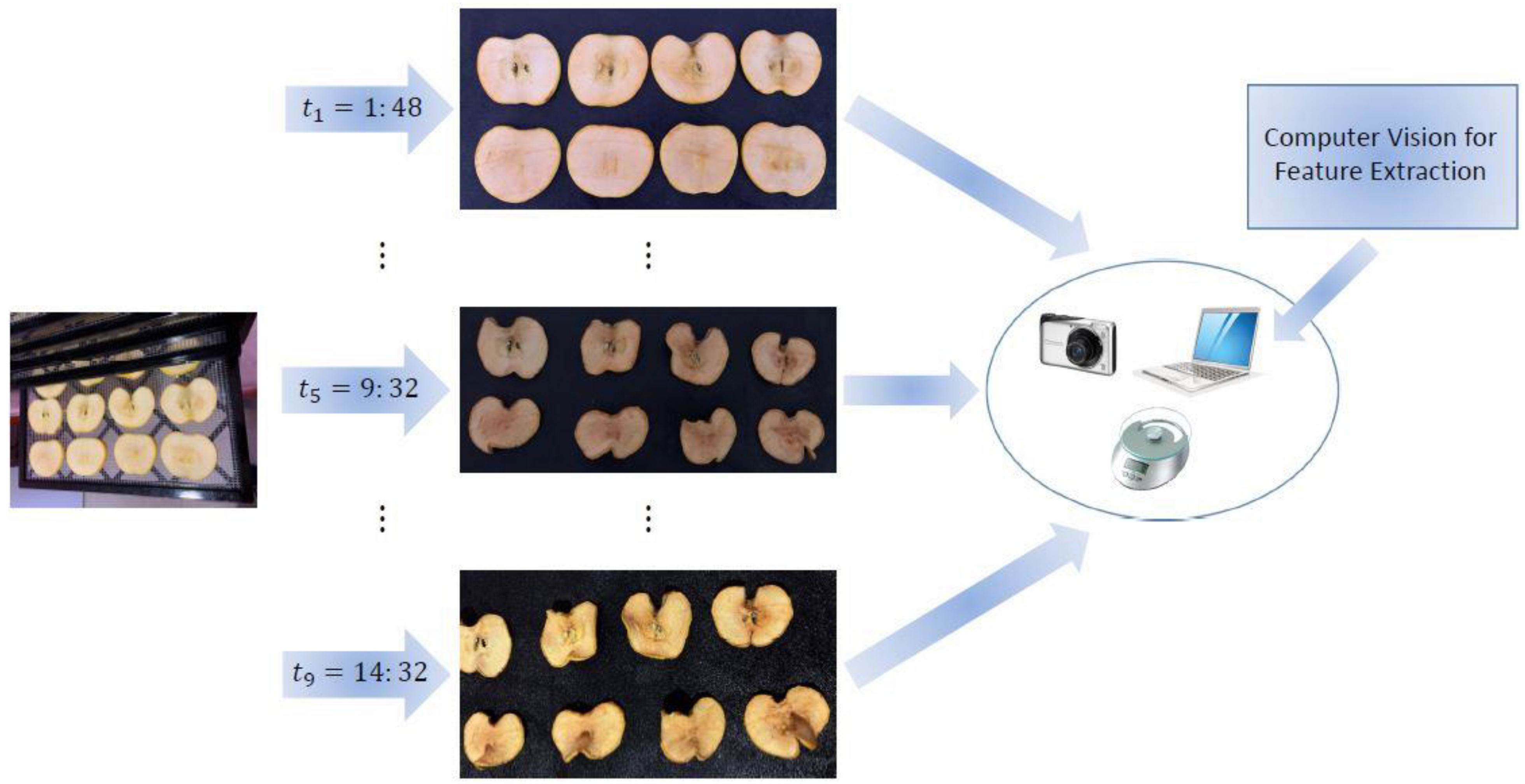
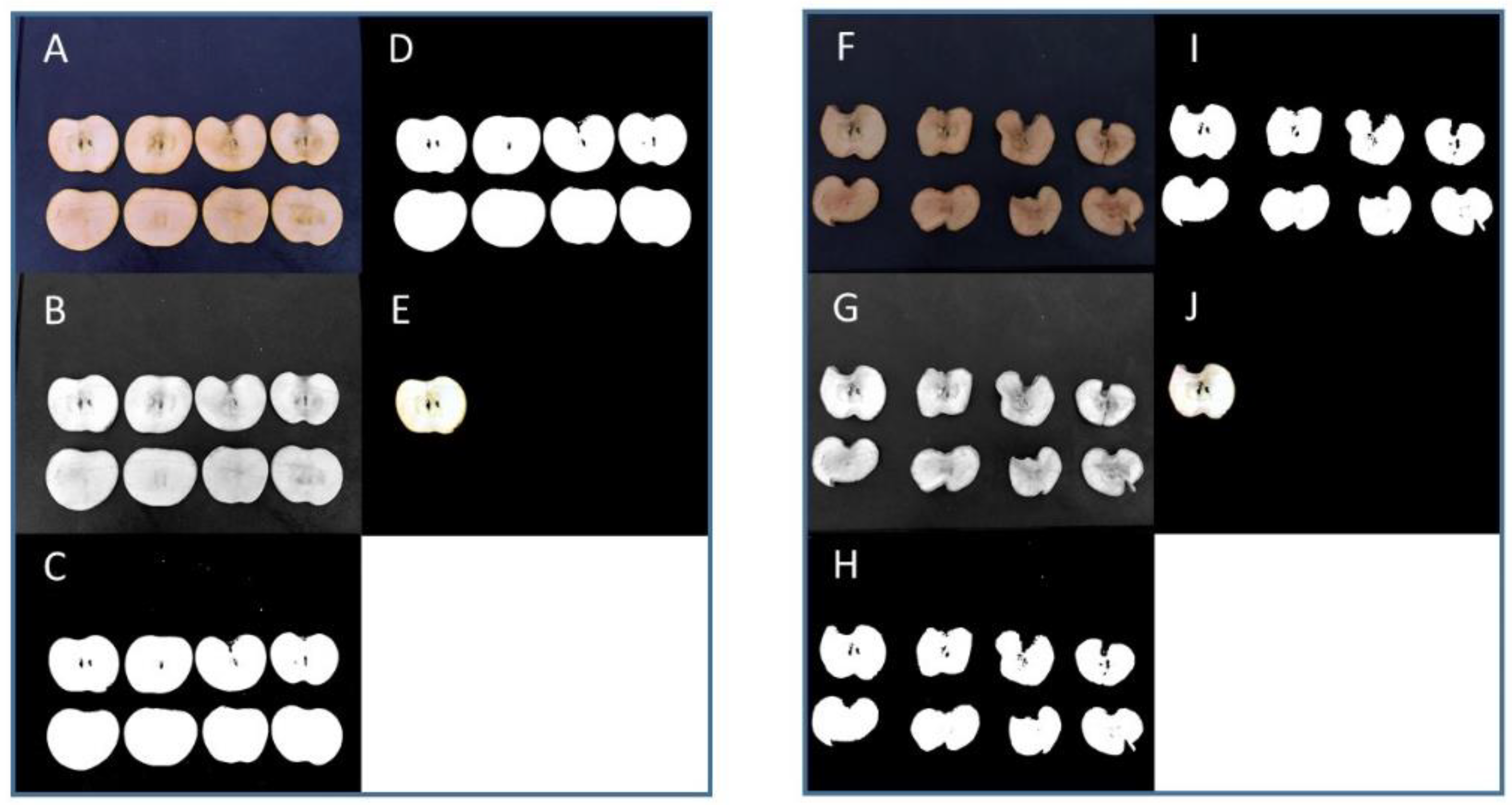
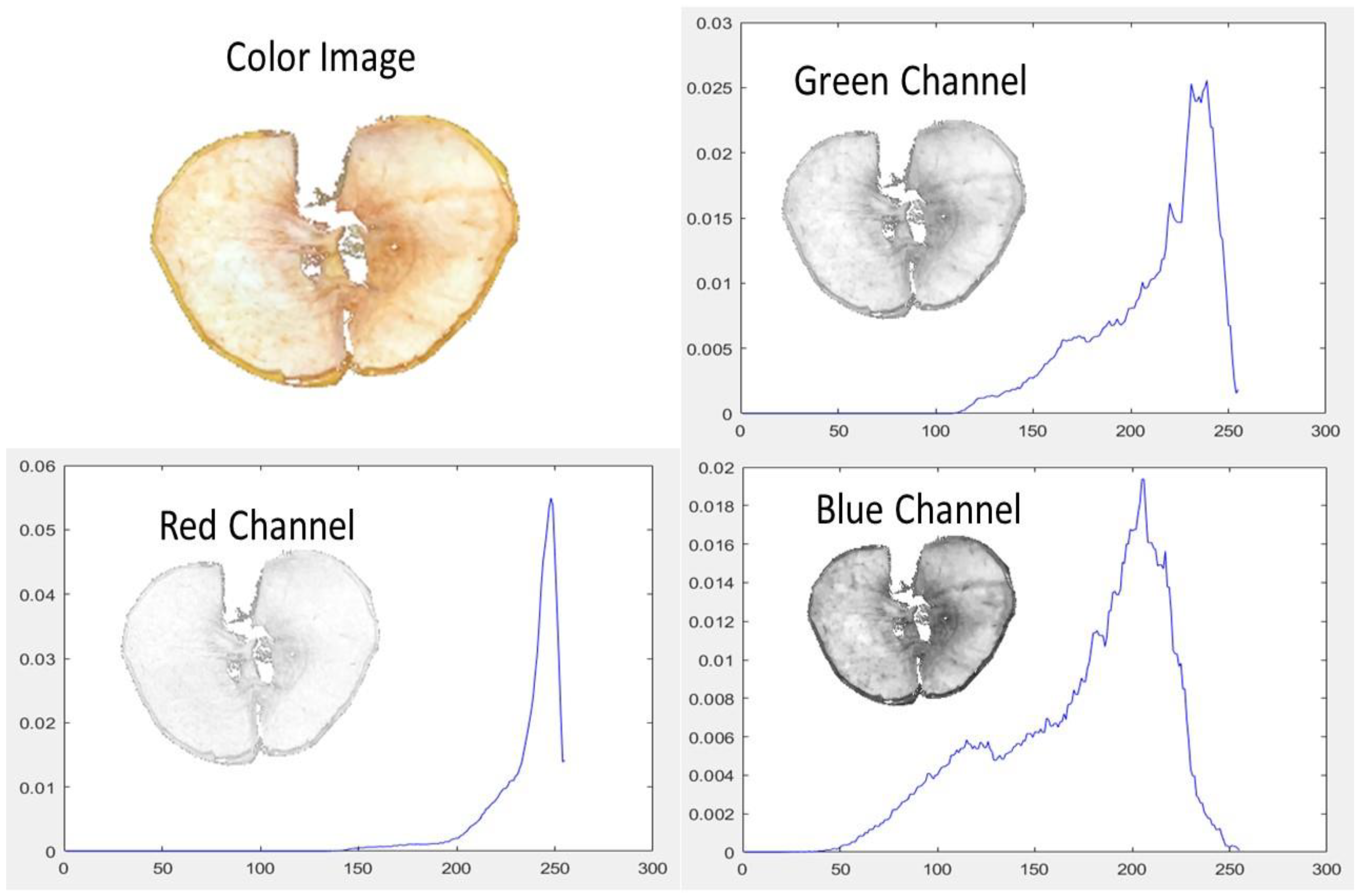
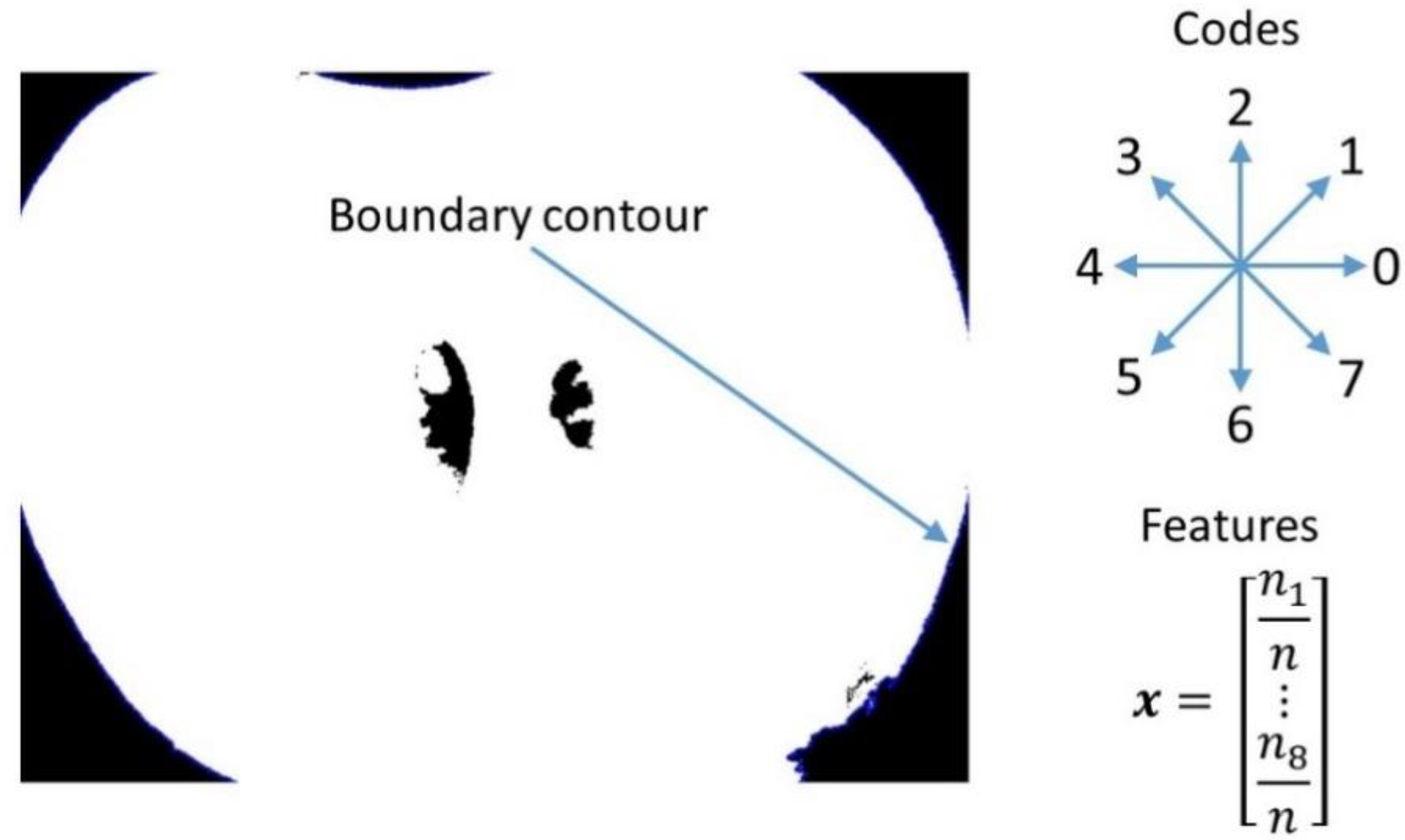
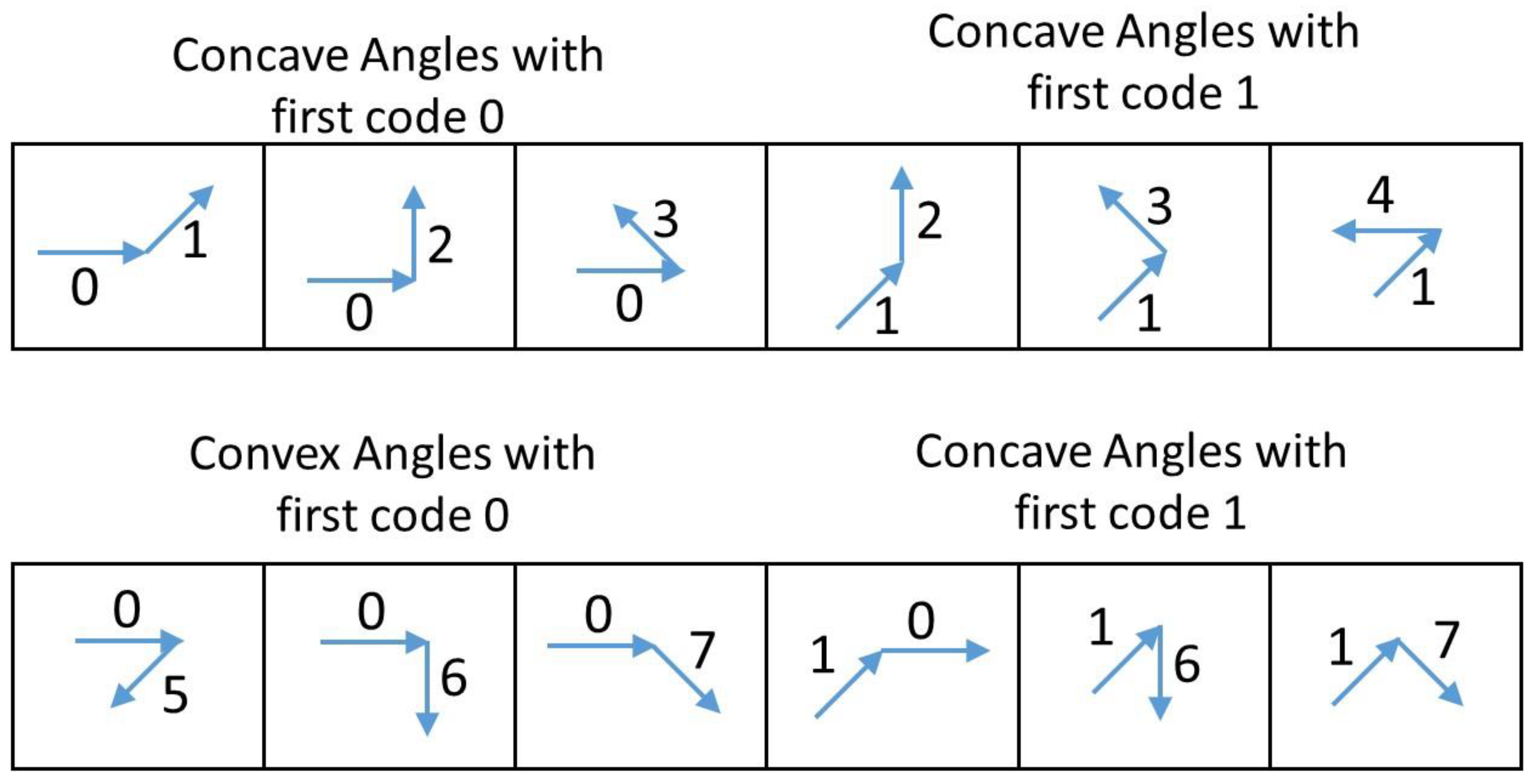
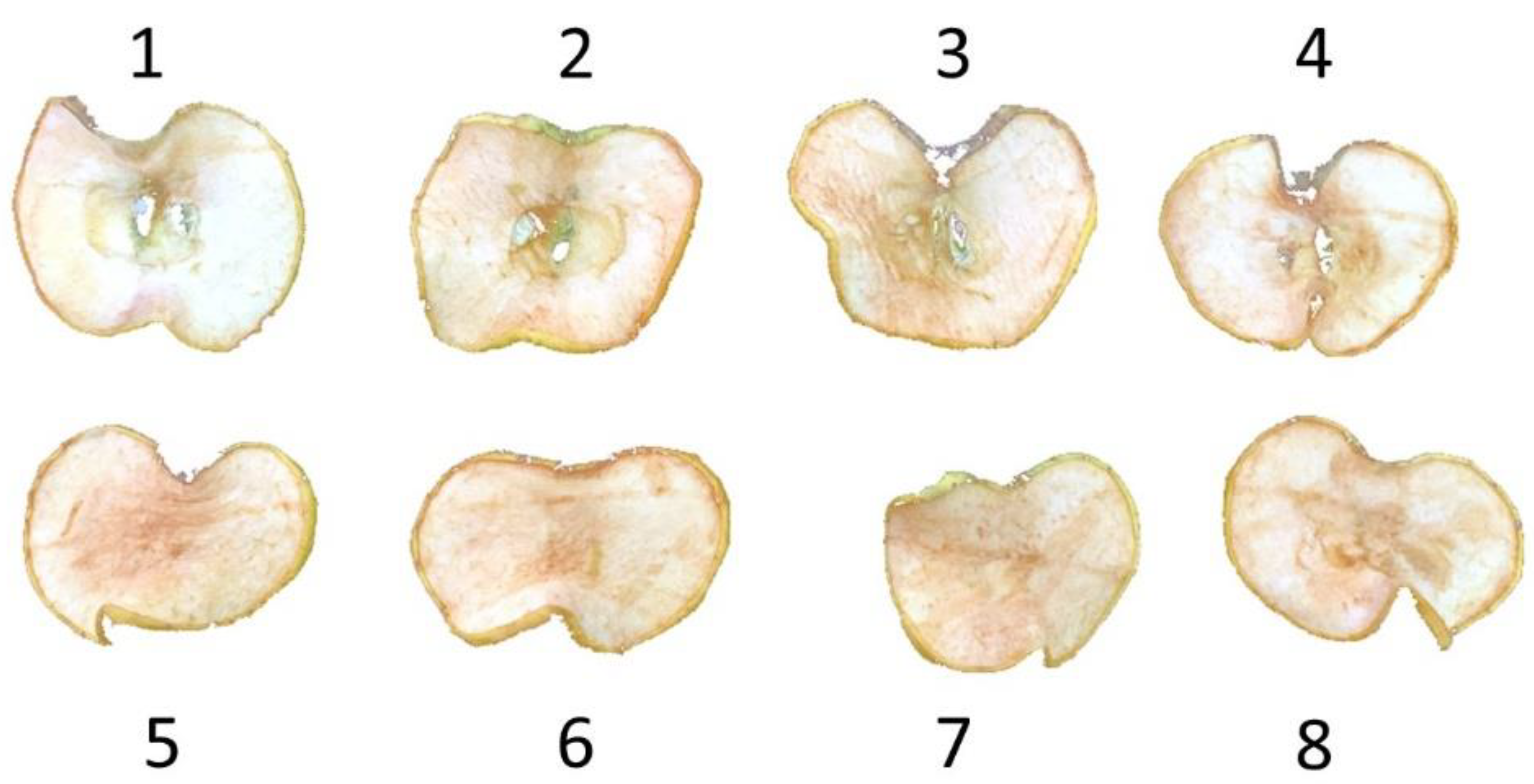

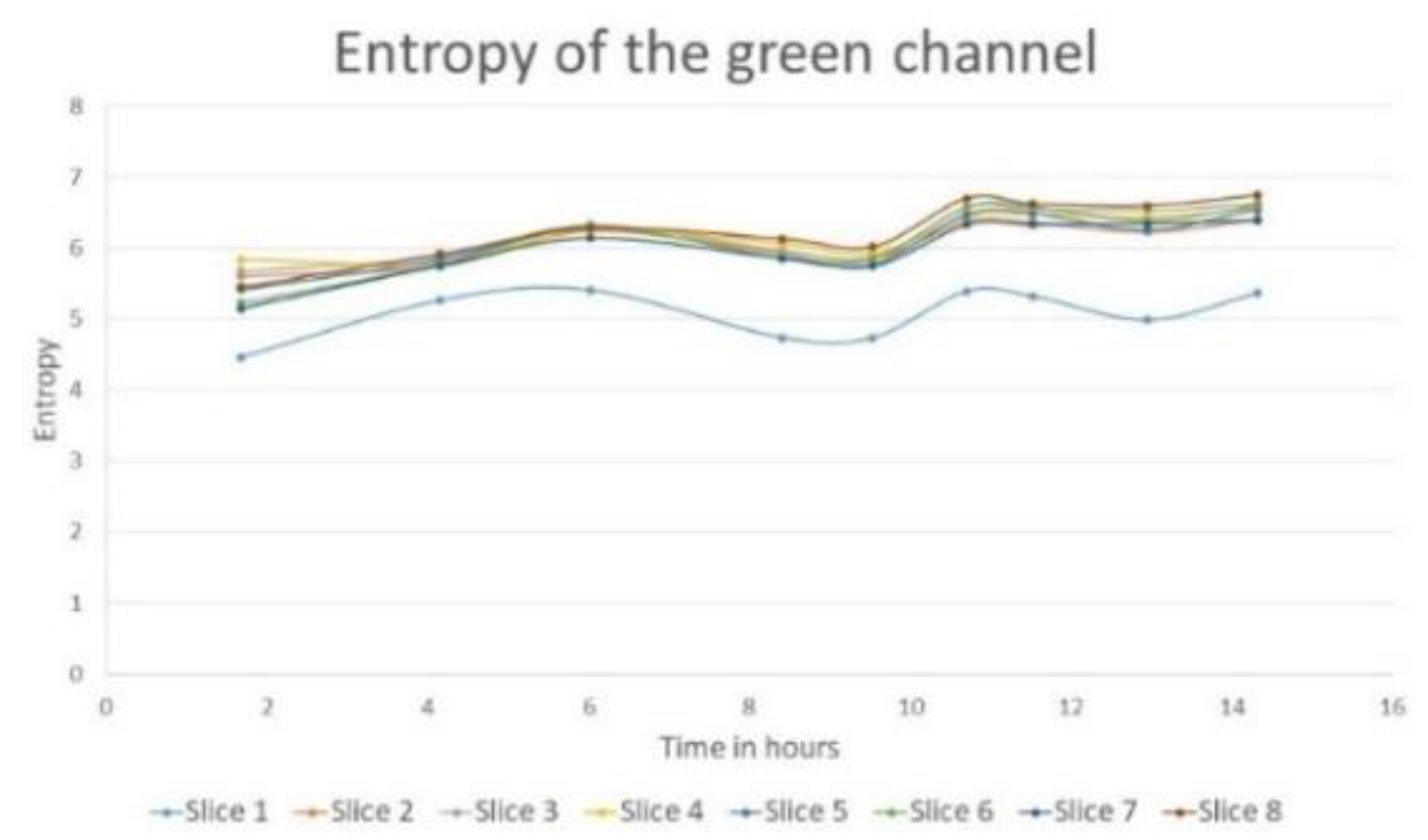
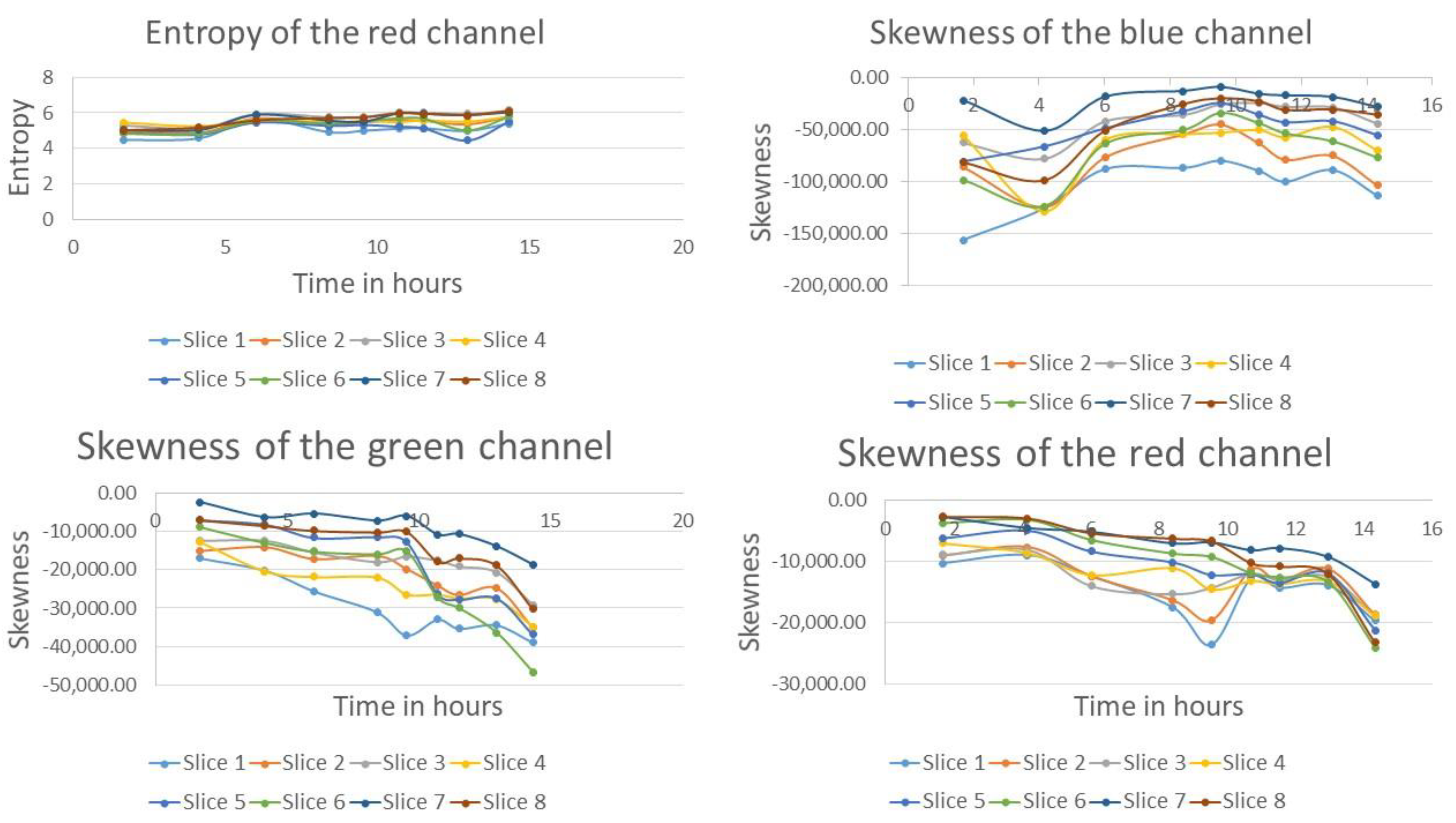
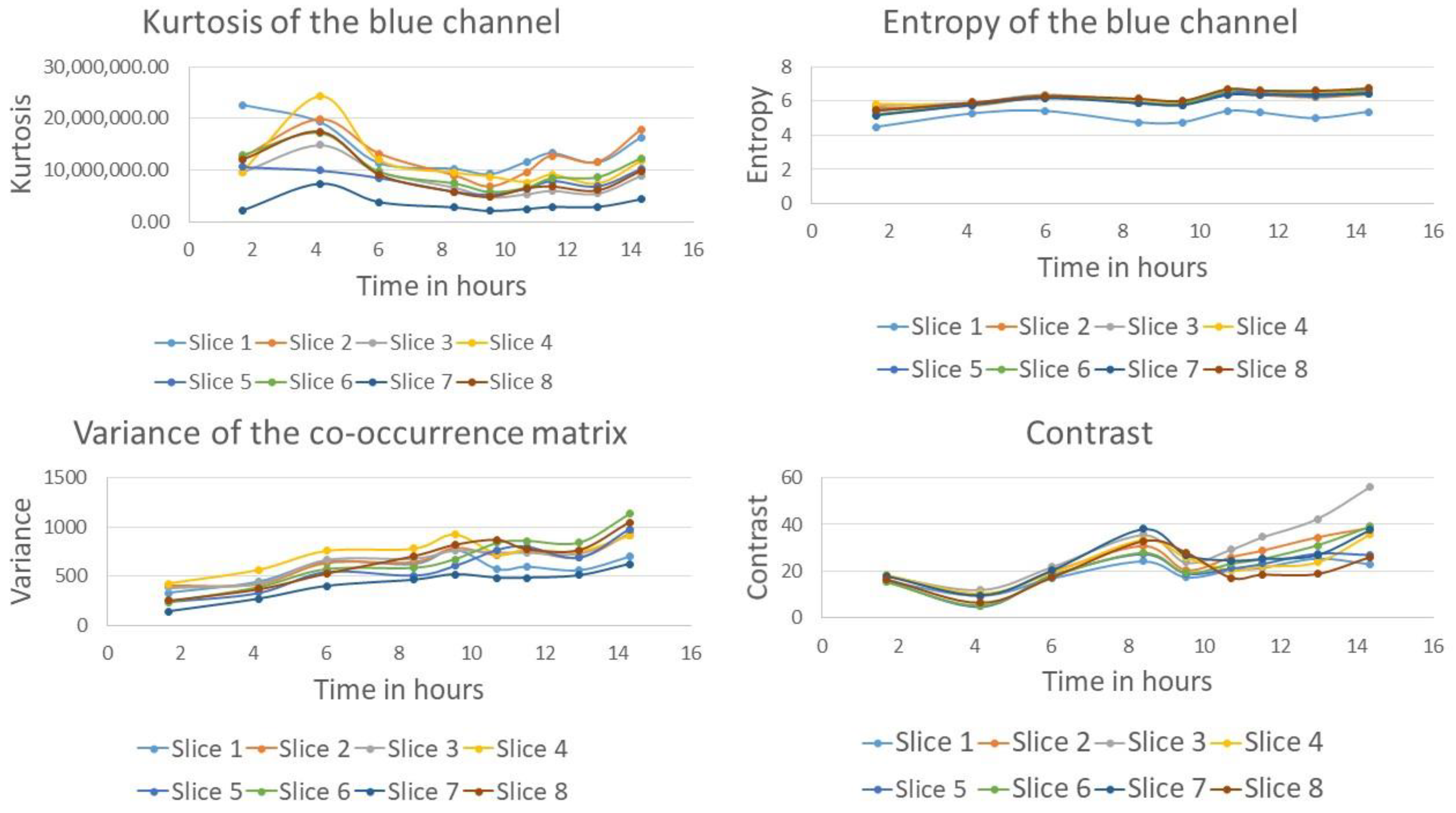
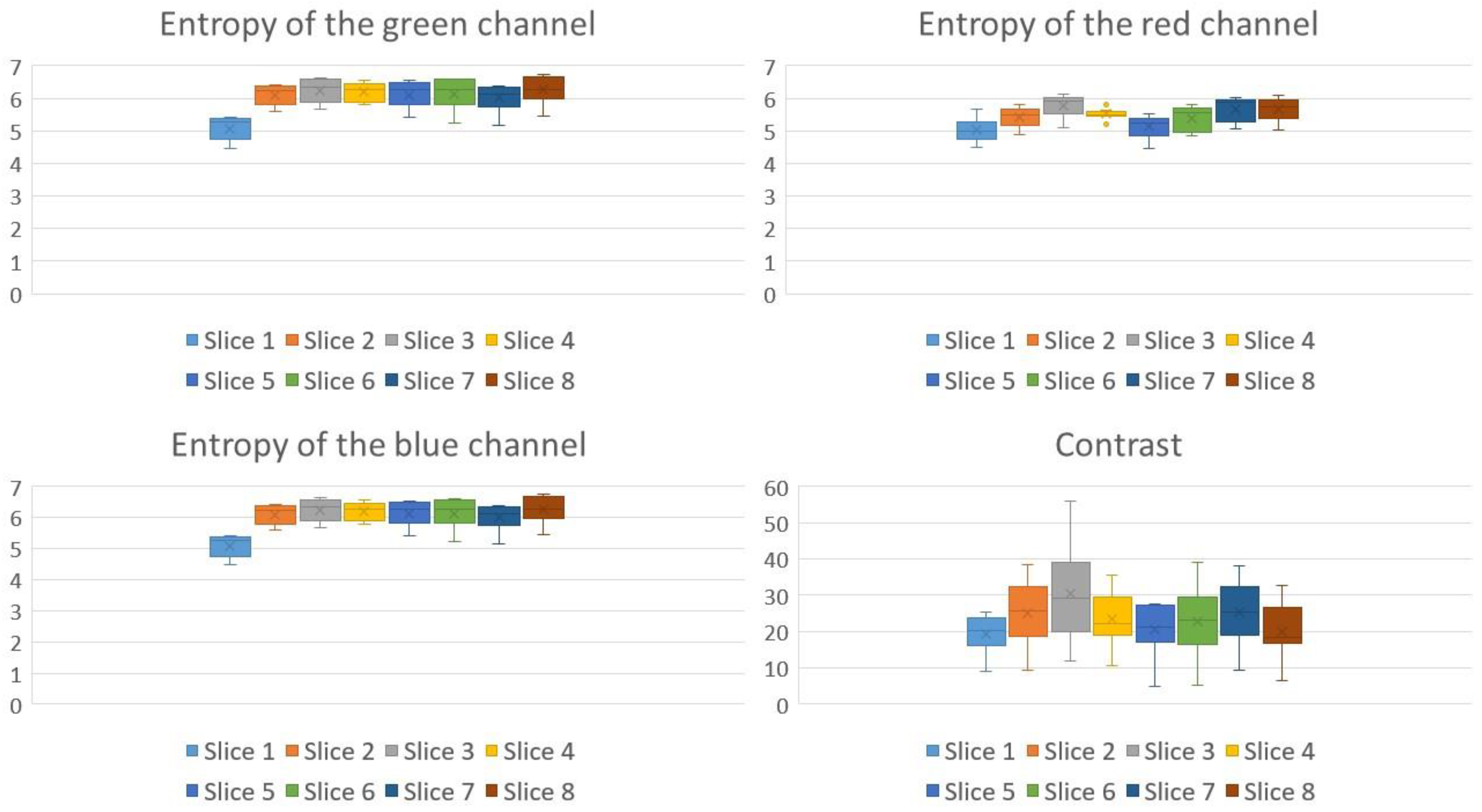
| t (Hours) | Weight (Grams) | Solid Weight (Grams) |
|---|---|---|
| 0 | 17.58 | 2.9 |
| 1.68 | 11.84 | 2.9 |
| 4.15 | 4.6 | 2.9 |
| 6.02 | 3.23 | 2.9 |
| 8.40 | 3.12 | 2.9 |
| 9.53 | 3.1 | 2.9 |
| 10.7 | 3.08 | 2.9 |
| 11.52 | 3.08 | 2.9 |
| 12.95 | 3.07 | 2.9 |
| 14.32 | 3.06 | 2.9 |
| t (Hours) | 1 | 2 | 3 | 4 | 5 | 6 | 7 | 8 |
|---|---|---|---|---|---|---|---|---|
| 1.68 | 4.4659 | 5.6065 | 5.6814 | 5.8435 | 5.4219 | 5.2304 | 5.1535 | 5.4562 |
| 4.15 | 5.2655 | 5.7509 | 5.8898 | 5.7991 | 5.8423 | 5.7779 | 5.7528 | 5.9189 |
| 6.02 | 5.4095 | 6.2502 | 6.3321 | 6.2623 | 6.2990 | 6.2864 | 6.1386 | 6.2796 |
| 8.40 | 4.7413 | 5.9452 | 5.9732 | 6.0673 | 5.8624 | 5.8795 | 5.8585 | 6.1343 |
| 9.53 | 4.7388 | 5.8542 | 5.8804 | 5.9349 | 5.7763 | 5.8466 | 5.7445 | 6.0218 |
| 10.7 | 5.3979 | 6.3871 | 6.5817 | 6.4409 | 6.4760 | 6.5777 | 6.3284 | 6.7027 |
| 11.52 | 5.3229 | 6.3724 | 6.5634 | 6.4797 | 6.4882 | 6.5789 | 6.3312 | 6.6230 |
| 12.95 | 4.9871 | 6.2365 | 6.5405 | 6.4353 | 6.2559 | 6.3823 | 6.3425 | 6.5945 |
| 14.32 | 5.3671 | 6.4145 | 6.6374 | 6.5644 | 6.5484 | 6.6065 | 6.3889 | 6.7456 |
| Visual Feature | Average (%) | Visual Feature | Average (%) |
|---|---|---|---|
| Entropy green channel | 19.81 | Entropy blue channel | 19.81 |
| Entropy red channel | 16.82 | Variance co-occurrence matrix | 230.89 |
| Skewness blue channel | 11.25 | Contrast | 107.17 |
| Skewness green channel | −298.58 | Kurtosis green channel | 557.86 |
| Skewness red channel | −303.04 | Angular second moment | −37.65 |
| Kurtosis blue channel | 13.36 | Correlation co-occurrence matrix | −65.95 |
Publisher’s Note: MDPI stays neutral with regard to jurisdictional claims in published maps and institutional affiliations. |
© 2022 by the authors. Licensee MDPI, Basel, Switzerland. This article is an open access article distributed under the terms and conditions of the Creative Commons Attribution (CC BY) license (https://creativecommons.org/licenses/by/4.0/).
Share and Cite
Baigts-Allende, D.; Ramírez-Rodrígues, M.; Rosas-Romero, R. Monitoring of the Dehydration Process of Apple Snacks with Visual Feature Extraction and Image Processing Techniques. Appl. Sci. 2022, 12, 11269. https://doi.org/10.3390/app122111269
Baigts-Allende D, Ramírez-Rodrígues M, Rosas-Romero R. Monitoring of the Dehydration Process of Apple Snacks with Visual Feature Extraction and Image Processing Techniques. Applied Sciences. 2022; 12(21):11269. https://doi.org/10.3390/app122111269
Chicago/Turabian StyleBaigts-Allende, Diana, Milena Ramírez-Rodrígues, and Roberto Rosas-Romero. 2022. "Monitoring of the Dehydration Process of Apple Snacks with Visual Feature Extraction and Image Processing Techniques" Applied Sciences 12, no. 21: 11269. https://doi.org/10.3390/app122111269
APA StyleBaigts-Allende, D., Ramírez-Rodrígues, M., & Rosas-Romero, R. (2022). Monitoring of the Dehydration Process of Apple Snacks with Visual Feature Extraction and Image Processing Techniques. Applied Sciences, 12(21), 11269. https://doi.org/10.3390/app122111269






